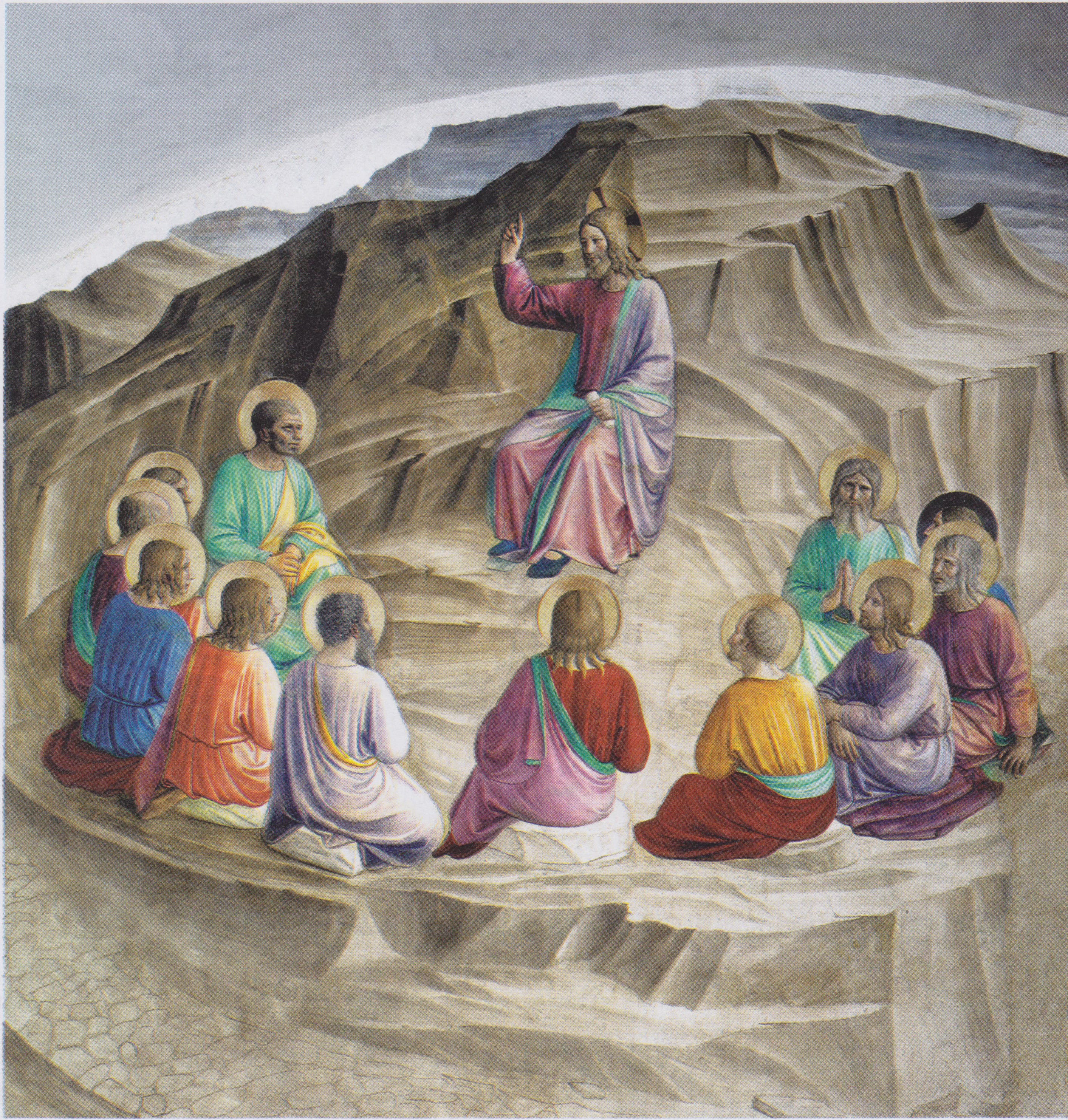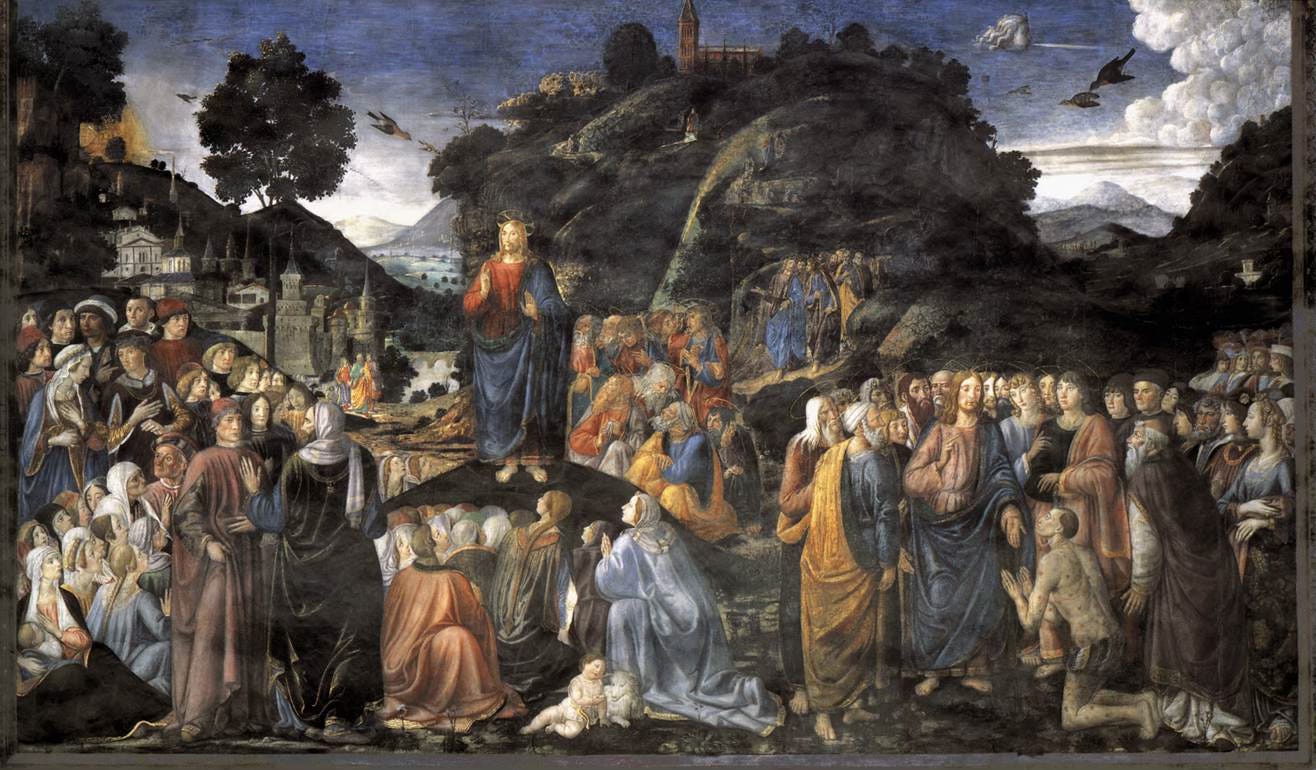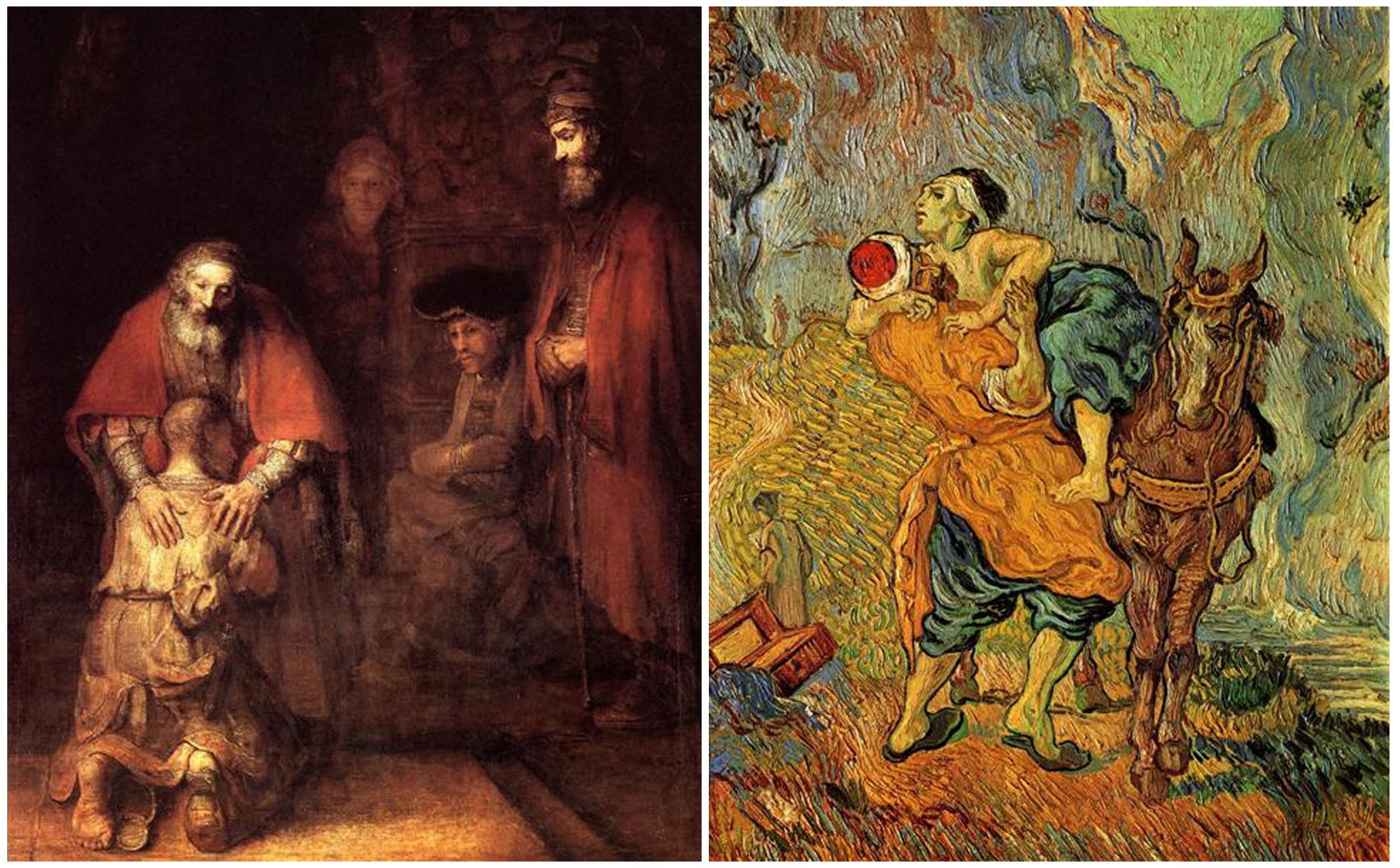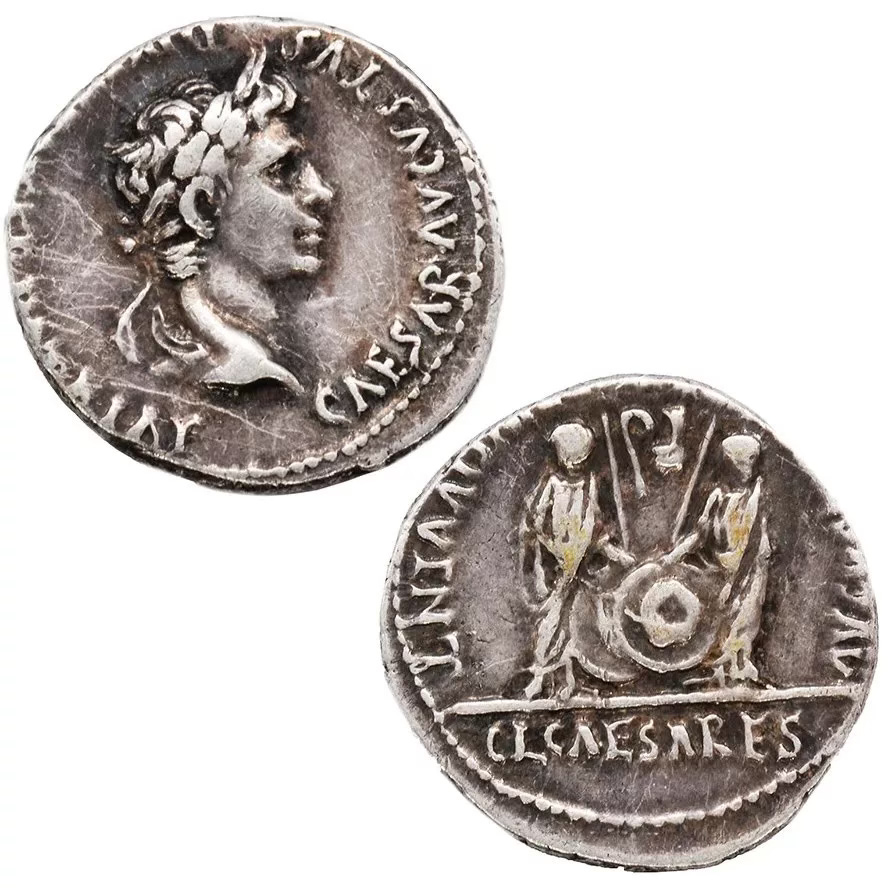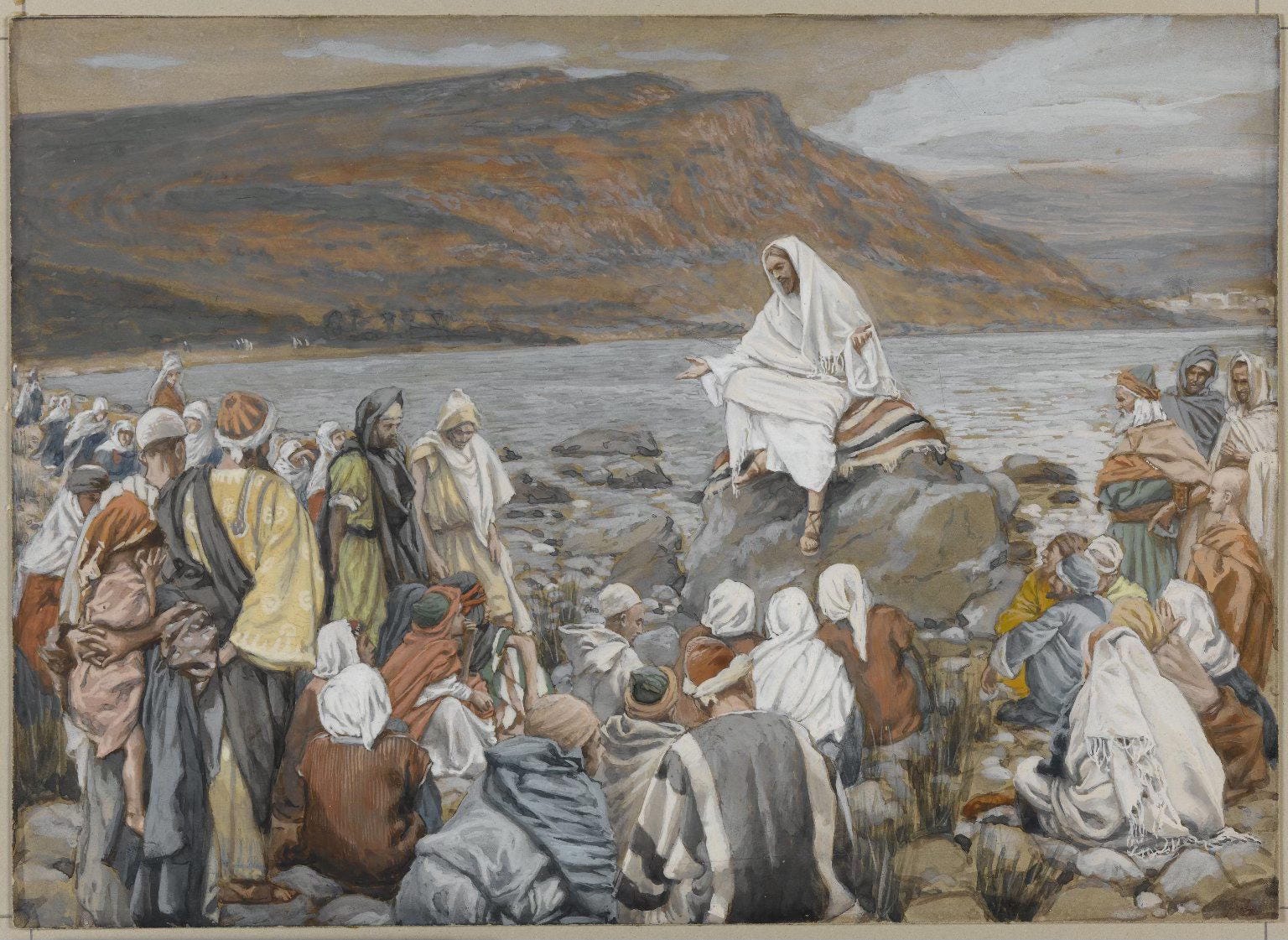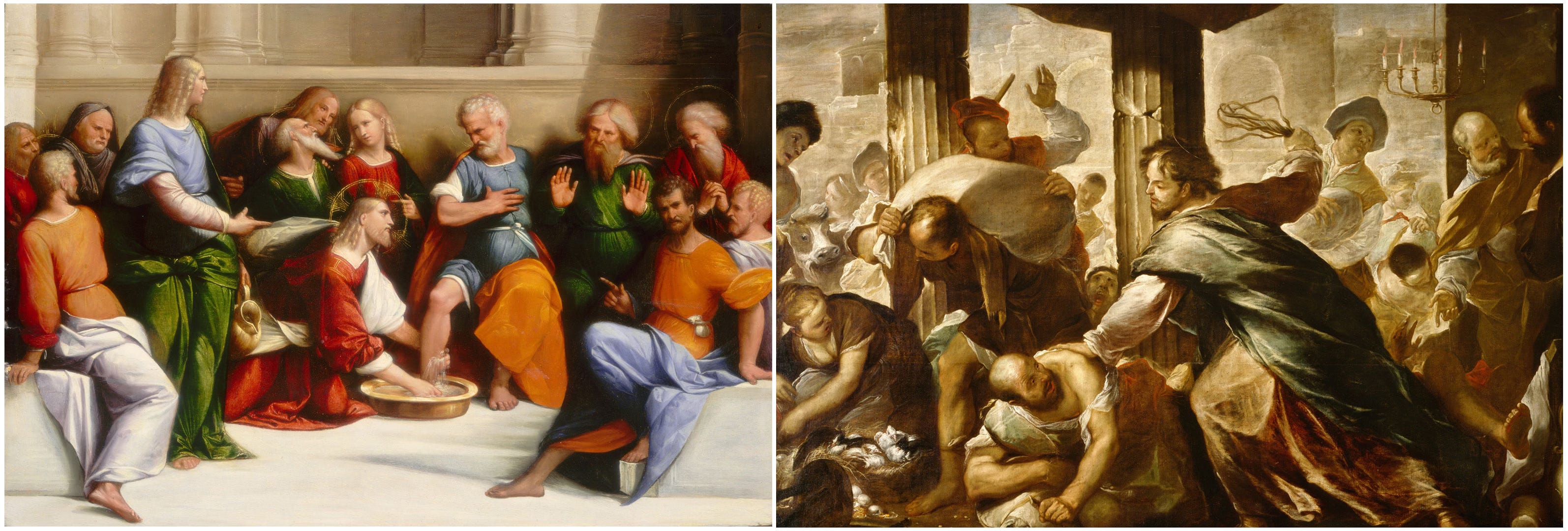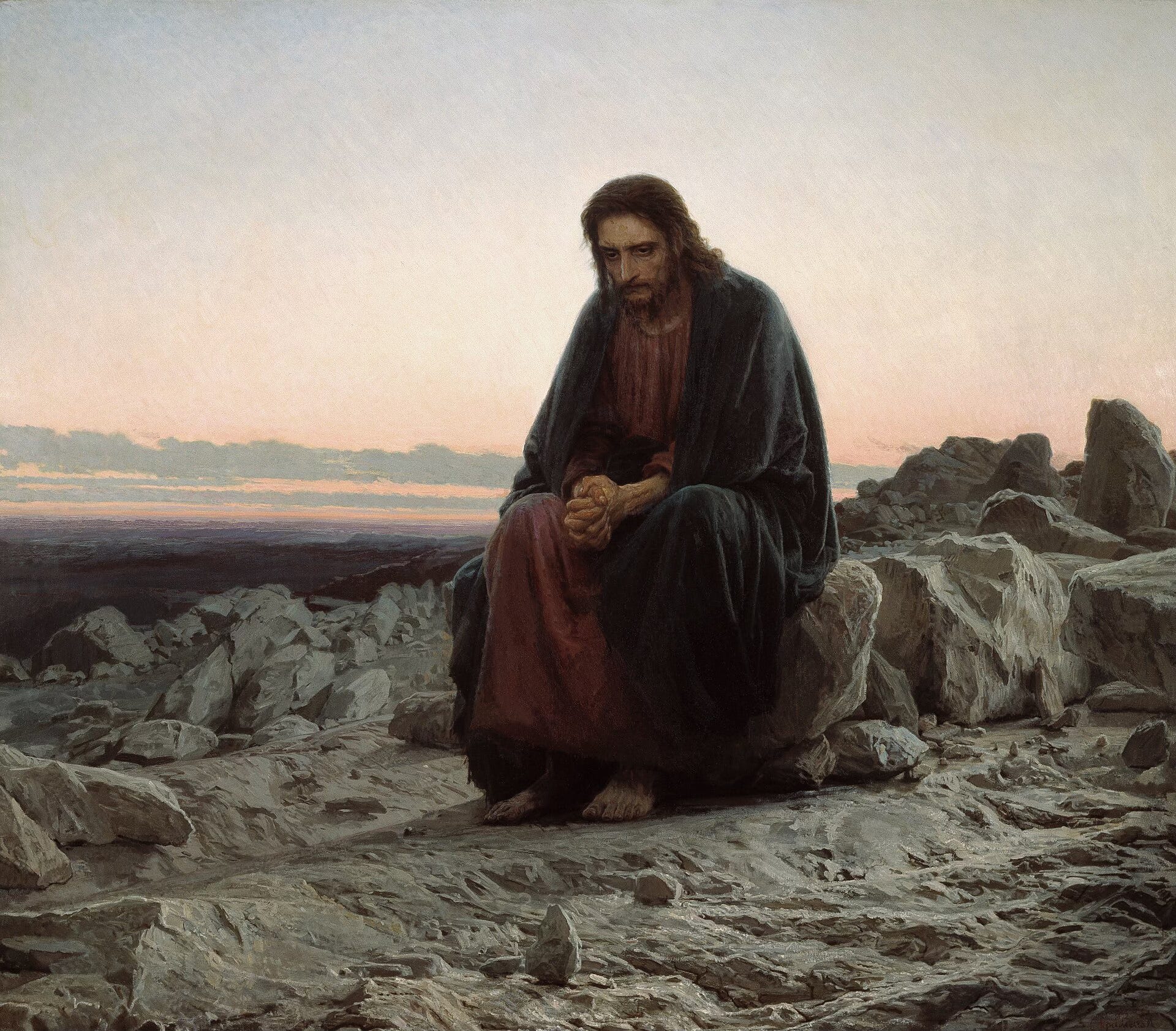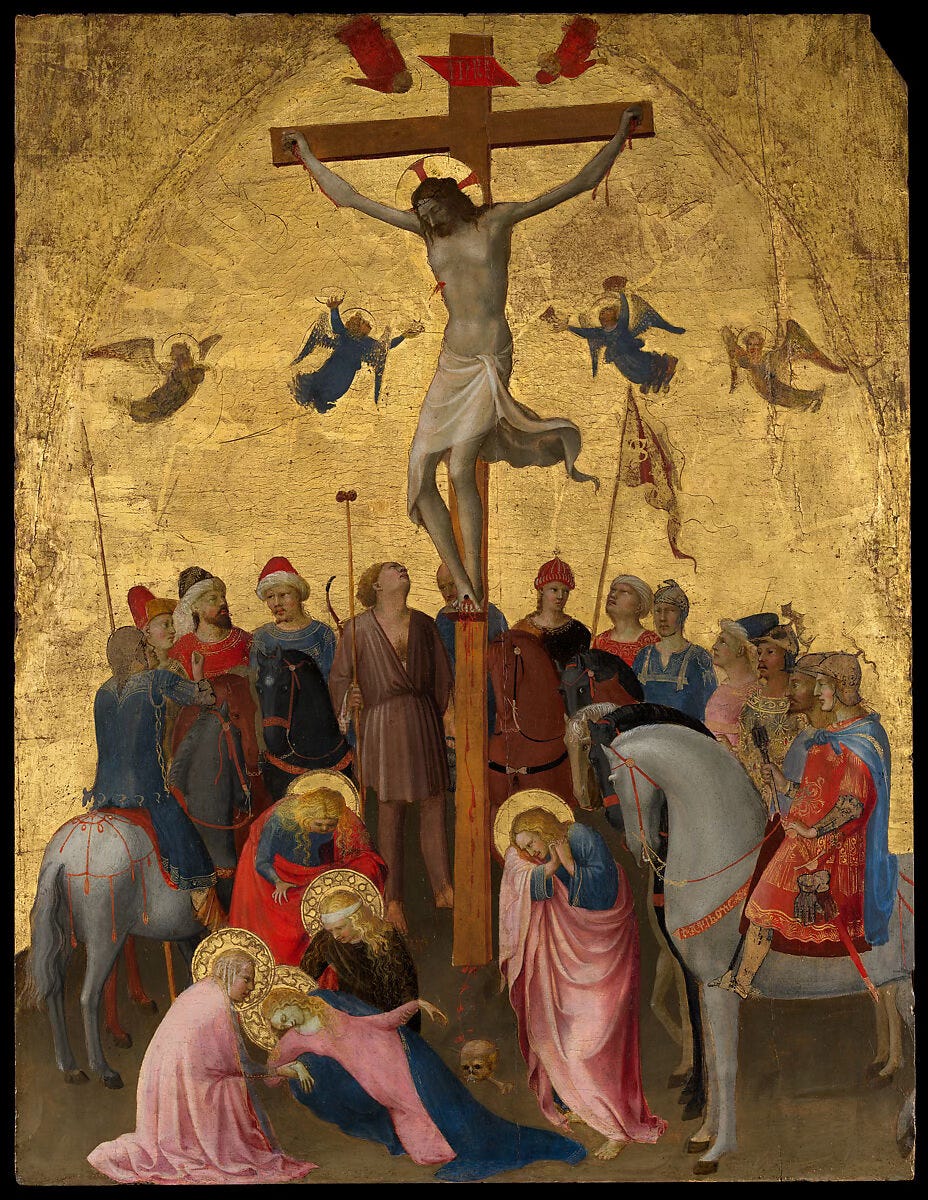YOU CALL ME TEACHER AND LORD, AND RIGHTLY SO, FOR THAT IS WHAT I AM
Smitten By Faith Issue Number : 0000100 May 27th, 2025
“You call me Teacher and Lord, and rightly so, for that is what I am”
(John 13:13).
“ ‘…Rabbi…We know that you are a teacher who has come from God, for no one can do these signs that you do apart from the presence of God.’ said the Pharisee Nicodemus when he came to visit Jesus by night.”
(John 3:2).
Above : Fresco by Fra Angelico ( 1395-1455); ‘The Sermon on the Mount’ – Jesus speaks to his Apostles; Museum of San Marco, Florence, Italy
Did you know that Jesus Christ was also a teacher ? Not just any teacher but the ultimate teacher.
In all the four Gospels of Matthew, Mark, Luke and John, there are countless occasions – over 150 to 200 times - no exact count being made here – when Jesus is directly addressed as either : ‘Master’, ‘Lord’, ‘Son of David’, ‘Teacher’ or ‘Rabbi’ (the Hebrew equivalent of Teacher). Of these many honorifics, ‘Teacher’ and ‘Rabbi’ were used in more than half of these instances.
The renowned 20th century Scottish Presbyterian theologian James S. Stewart (1896-1990) writes compellingly in his book, ‘Heralds of God’ in 1946 about the uniqueness of Jesus as a teacher. Stewart highlights the transformative power of Jesus Christ’s teachings which are not mere abstract ideas; they are dynamic and divine truth which transcends religious dogmas and offers us a direct encounter with God. He writes :
“…For the teaching of Jesus has had a power and an effect with which the influence of no other teacher can even for a moment be compared. It is not merely that HE satisfies the mind : HE captivates the conscience. HE does not simply arrest attention: HE changes lives.”
Above : ‘The Sermon on the Mount’ by Cosimo Rosselli ( 1439-1507); Fresco at the Sistine Chapel, Vatican City
Jesus had only 3 years of his mission on earth “…to seek and to save the lost” (Luke 19:10; Matthew 1:21; 1 Timothy 1:15). So, how was Jesus to do this? He had to convince his listeners. He taught them how to know God (John 17:3); how to see; and how to obey God's truth.
“ …If you continue in my word, you are truly my disciples; and you will know the truth, and the truth will make you free.” (John 8:32)
But Jesus was no mere teacher. At the famous ‘Sermon on the Mount ‘, the Gospel of Matthew (in 7:29) says that Jesus “…taught as one having authority, not as the teachers of the law”. This was the key. Jesus taught with his divine authority and wisdom. And, there were of course, immediate effects which we see in the Gospels.
· There was dramatic life-changing obedience. See how the 12 Apostles - ordinary men – most of them were fishermen - dropped everything – their livelihoods and their families to follow Jesus when he called them. (Matthew 4:19-20).
· There was conviction and repentance. Sinners turned to God in the case of Zacchaeus the tax collector who climbed up a sycamore tree to see Jesus more clearly in the big crowds ( Luke 19: 1-10) and who repented and gave away half his wealth; and the Samaritan woman ( see below ) being some examples which we can find in the Gospels.
· His words pierced doubt. “ Were not our hearts burning within us while he was talking to us on the road, while he was opening the scriptures to us ? “(Luke 24:32) .
· He exposed hypocrisy. “ The scribes and the Pharisees sit at Moses’ seat; therefore do whatever they teach you and follow it ; but do not do as they do, for they do not practice what they teach.”
“… But woe to you Scribes and Pharisees hypocrites ! For you lock people out of the Kingdom of Heaven “ (Matthew 23: 2-3 and 13-14 ) .
· In the awakened hearts, there was belief as you see at the wedding in Cana when Jesus turned water into wine.
“Jesus did this, the first of his signs, in Cana of Galilee and revealed his glory; and his disciples believed him .” ( John 2:11 ).
· Spiritual boldness. In Chapter 3 of the Acts of the Apostles ( written by Luke ), after the death, resurrection and ascension of Jesus, the Apostles Peter and John perform a miracle by healing a lame man and they are hauled up in front of the Sanhedrin, the Jewish religious leaders to be questioned. Peter then speaks boldly and courageously about Jesus and they are shocked and stunned.
“ When they saw the courage of Peter and John and realized that they were unschooled, ordinary men, they were astonished and they took note that these men had been with Jesus.”
( Acts 4:13 )
As you can see in the Gospel passages above, the Apostles’ ordinary lives were drastically changed from their short time with Jesus. Uneducated and unschooled in religious study, just look at the spiritual boldness, courage and impact of the Apostles - all ordinary men. Their transformative faith flowed not from their own human merit but from their close connection with Jesus and his teachings. Later, when Jesus died, resurrected and ascended into Heaven, their faith was ignited by the power of the Holy Spirit and these Disciples of Jesus now were fully equipped to be fearless proclaimers of the word of God.
TEACHING TOOLS
How did Jesus – this Ultimate Teacher – do it ? What tools of pedagogy did Jesus have ? What made his way of teaching unique ? Jesus employed a wide array of teaching tools to convey his message to his people. We can find in the Gospels some of the teaching methods. Here are some of these ‘tools’ which I list – not exhaustive and not in any particular order of importance. I list some of them to show what an extraordinary ‘teacher’ Jesus was.
INCLUSIVITY
Right : Jesus at the well with the Samaritan woman; Vincenzo Catena 1470-1531 c. 1520–1530, oil on canvas; Columbia Museum of Art, South Carolina, USA
Left : Paolo Veronese ( 1545-1548 ) ; The Conversion of Mary Magdalene ; oil on canvas; National Gallery, London
Unlike the Jewish Rabbis who taught only roomfuls of men, Jesus taught everyone – including women ! He was unique in his inclusivity teaching women, children, sinners and outcasts – all in public. In the two paintings above, you see Jesus teaching the lower caste Samaritan woman at the well and driving the demons out of Mary Magdalene.
In the famous encounter at the water well between Jesus and a woman from Samaria as recounted in the Gospel of John ( 4:1-42) , Jesus crosses the border of Judea and travels to Samaria where he sits by a well to speak to a Samaritan who is of a lower ethnic class from the Jews. Worse, she is a woman with loose morals having had five husbands. Yet, Jesus goes purposefully to the well at noon where he meets the solitary Samaritan woman. Jesus not only asks for water but also proceeds to speak to her and teach her. He tells her, “Everyone who drinks this water will be thirsty again, but whoever drinks the water I give them will never thirst” (John 4 :13). And later, when this astounded woman brings more Samaritans to listen to Jesus; they also believe and they declare, “We know that this man really is the Saviour of the world” (John : 4: 42). The Samaritans were not Jews and yet, Jesus went to them; his words extending beyond the borders of Judea – already then – so early in his mission.
As for Mary Magdalene, after Jesus freed her from demonic oppression, she became not only a firm follower of Jesus, she was his most devoted disciple, staying with him to the very end at his crucifixion. It was no coincidence that Mary Magdalene was the first person Jesus appeared to at his empty tomb.
PARABLES
Jesus mastered the art of using the short simple story or parable from relatable everyday scenarios to convey a moral lesson through analogy. In his many parables Jesus used farming, lost objects, family conflicts and cultural context to invite his listener to apply the lesson personally. Here are two examples: the ‘Parable of the Good Samaritan’ and the ‘Parable of the Prodigal Son’.
Left : Rembrandt’s ‘Return of the Prodigal Son’ ( 1669); oil on canvas ; Hermitage Museum, St. Petersburg, Russia.
Right : Vincent Van Gogh , ‘The Good Samaritan’ ( 1890); oil on canvas, , Kröller-Müller Museum, Otterlo, Netherlands.
In the Gospel of Luke ( 10:25-37), Jesus tells the story of how a Jew is attacked by robbers who beat him up terribly, steal his possessions and leave him for dead on the road. Many other jews walk by but they ignore the plight of their fellow Jew. Until a Samaritan passes by. A Samaritan ( as mentioned earlier) is from an ethnic group of a lower class despised by Jews. However, this Samaritan not only stops, he nurses the Jew’s wounds, and takes him to an Inn where he pays for the Jew to stay. Jesus uses this parable to describe what he meant when he taught his followers to love his neighbour. This parable covers the importance of compassion, love for one another and how we need to discard social barriers.
The Parable of the Prodigal Son is well known. In the Gospel of Luke 15:11-32 we see how Jesus used this lovely story about a father welcoming home with great joy, his long lost repentant son to show the quality of mercy, repentance, forgiveness and love. For God, any sinner who truly repents will be forgiven because he loves us unconditionally.
PHYSICAL OBJECTS
Above : Denarius Of Caesar Augustus – Roman Silver Coin of Caeser Augustus - From The Time Of Jesus
The Jews were under the rule of the Roman Emperor. In the Gospel of Matthew 22:15-22, the Jewish Pharisees and Sanhedrin priests tried to trap Jesus by asking him about whether they should pay taxes to Caesar. Jesus used the simple Roman coin or ‘denarius’ with the head of Roman Emperor Caesar Augustus.
"Is it lawful to pay taxes to Caesar, or not?" They asked Jesus.
If Jesus said, ‘No’, He’d be accused of rebellion against Rome. If He said, ‘Yes’, it would be a cowardly answer. Instead, Jesus used the Roman coin to answer the question. He Pointed to Caesar’s image on the coin and asked :
"Whose image and inscription is this?"
They replied, "Caesar’s."
Jesus then famously said,
"Render therefore to Caesar the things that are Caesar’s, and to God the things that are God’s.”
THE SOCRATIC METHOD
Jesus frequently engaged people with probing questions to provoke self-reflection, stimulate critical thinking and reveal deeper truths. This Socratic method was a clever pedagogical approach. Jesus challenged hypocrisy when in the case of the adulterous woman, he was asked whether to stone a woman caught in adultery, Jesus responds, “Let him who is without sin cast the first stone.” (John 8:1–11). This rhetorical question forces the accusers to confront their own moral failings.
On another occasion, Jesus asks his disciples a pivotal question about his identity. In Mark 8: 27-29, Jesus asks :
“Who do people say I am?”
They reply, “ Some say John the Baptist; others say Elijah and still others, one of the Prophets.”
“But what about you ?” asks Jesus again. “Who do you say I am?”
The Apostles are forced to go deeper and articulate their own faith. This culminates with Peter then declaring. “ You are the Messiah.”
REPETITION, ALLITERATION AND RHYTHM
Above : Jesus at the ‘Sermon on the Mount’; watercolour by James Tissot, 19th century French painter ( 1836-1902) whose wonderfully detailed watercolours of the Life of Jesus Christ can be seen at the Brooklyn Museum of Art in New York City.
Jesus employed poetic structures such as repetition, alliteration and rhythm which were also common in Hebrew literature. The beauty of this method which allowed for contemplative and rhythmic cadence can clearly be seen in the ‘Beatitudes’ proclaimed by Jesus at the famous ‘Sermon on the Mount’ ( Matthew 5: 3-12) with the repeated phrasing of “Blessed are ………”
The Beatitudes is also a lesson of hope which turns out to be not only beautiful and poetic but also enduring and prophetic. There are 8 Beatitudes in all. Here is an example of just the first three :
“Blessed are the poor in spirit, for theirs is the kingdom of Heaven.
Blessed are those who mourn, for they will be comforted.
Blessed are the meek, for they will inherit the earth.”
PERFORMANCE OF SYMBOLIC ACTIONS
Left : Garafalo (1481–1559), ‘Christ Washing the Disciples' Feet’ c. 1520/1525; National Gallery of Art, Washington DC, USA
Right : Luca Giordano ( 1705 ) ‘Christ Cleansing the Temple’; oil on canvas, Bob Jones University of Art
Sometimes words alone are not sufficient to convey abstract ideas or truths. As the ultimate teacher, Jesus knew that. So he often used symbolic actions to bridge the gap between theory and practice; making intangible concepts tangible and memorable; and bringing home his teachings. There are many examples of how Jesus used such performative pedagogy in the Gospels. I will only illustrate with two here.
Jesus washes the disciples’ feet (John 13:1–17) to show humility and leadership. It is the Last Supper – the last day of his time left on earth when the foot-washing occurs. Jesus chooses this precious day to give his beloved Apostles ( including the traitor Judas ) a lesson in humility and love. He washes their feet. In Jesus’ time, washing guests’ feet was a common act of hospitality, but this menial task was typically performed by servants or slaves. For a rabbi or leader to wash others’ feet was unthinkable—it inverted societal norms of honor and status. However, by taking the role of a servant, Jesus destroys all these illusions. He says to his Apostles, “Now that I, your Lord and Teacher, have washed your feet, you also should wash one another’s feet” (John 13:14).
In the very dramatic episode of the temple cleansing where Jesus condemns the commercialization going on at the temple, the House of God, Jesus makes a whip of cords and clears the temple of the money changers, animals and merchants. The clearing of the temple, Jesus’ confrontation with the hypocritic Jewish priests occur during Jesus’ final week in Jerusalem just after His triumphal entry (Palm Sunday) and before His crucifixion. This symbolic action is so important that it appears in all four gospels.
“Jesus entered the temple courts and drove out all who were buying and selling there. He overturned the tables of the money changers and the benches of those selling doves. ‘It is written,’ He said to them, ‘My house will be called a house of prayer, but you are making it a den of robbers.’” ( Matthew 21:12–13)
OTHER TOOLS
Jesus used other tools too. For example :
PARTICIPATION
He asked his listeners to engage actively.
“Let anyone with ears to hear, listen!” (Mark 4:9)
IRONY & PARADOX and counterintuitive statements to challenge assumptions:
“The first will be last, and the last first” (Matthew 20:16).
“Whoever wants to save their life will lose it” (Luke 9:24).
EXAGGERATION
To get his point across, Jesus sometimes used exaggeration. For example, he said :
“If your right eye causes you to sin, gouge it out” (Matthew 5:29).
“It is easier for a camel to go through the eye of a needle…” (Mark 10:25).
And, he set up HIS OWN PERSONAL EXAMPLE
Above : Christ Alone in the Desert Wilderness to pray – Oil on canvas by Russian artist, Ivan Kramskoi ( 1872), Tretyakov Gallery in Moscow, Russia.
Jesus often retreated to pray in solitude. He wanted to prioritize silent prayer. See the poignant painting above .
THE SOURCE – HIS OWN DIVINE AUTHORITY
Jesus taught with divine authority.
“…For he taught them as one having authority, and not as their scribes.” (Matthew 7:29).
As fully God and fully Man, Jesus’ authority isn’t just about what He taught but who He is ! His truth isn’t a static doctrine; He is the truth ! When Jesus teaches, it’s a living encounter that captivates our consciences and transforms our lives.
I had begun this essay with the compelling rationale of a Presbyterian theologist.
I end with the stirring writings of two Catholic theologists – seven centuries apart - St. Thomas Acquinas from the 13thcentury and Romano Guardini, a 20th century priest and counsellor to two Popes.
Above from left to right : The three theologians:
James S. Stewart, a Presbyterian Theologian mentioned at the beginning of this essay; and the two Catholics - Saint Thomas Aquinas in the centre (in a 1481 oil painting by Sandro Botticelli ); and far right, Romano Guardini ( 1885–1968)
For St. Thomas Acquinas (1225–1274 ), "Christ is the first and chief teacher of spiritual doctrine… For He Himself is the wisdom of God, which is the source of all wisdom.” In his ‘Summa Theologiae’ Acquinas says that Jesus’ Sermon on the Mount provides not merely moral guidelines but carry divine authority since Jesus is the source of all wisdom.
Romano Guardini ( 1885–1968), a 20th century Catholic priest and theologist whose profound writings on Catholic theology shaped Vatican II famously wrote that “…to be a Christian means to be grafted into Christ, so that His life becomes ours.” Guardini also says that when Jesus said, “ follow me” , Jesus was not providing a philosophy or a way to live but that the teachings of Jesus Christ are themselves a reality to live.
YOU DID NOT CHOOSE ME; I CHOSE YOU
Above: Fra Angelico - The Crucifixion. c1420-23; tempera on wood, gold ground; Metropolitan Museum of Art, New York City, USA
Most of all, Jesus gave us his own death and Resurrection as the ultimate lesson in sacrificial love - a redemptive love which reconciles humanity with God.
“ Greater love has no one than this: that someone lay down his life for his friends. “
(John 15:13).
Jesus calls all his disciples and followers his “friends”. He gives us a friendship rooted in grace and he says :
“ You did not choose me, but I chose you and appointed you so that you may go out and bear fruit – fruit that will last- and so that whatever you ask in my name the Father will give you.”
( John 15: 16 )
And, indeed, Jesus empowers us to love courageously and boldly because death is not the end.
___________________________________________________________________________
Editor’s Note :
Dear Reader
Thank you for reading this edition of SMITTEN BY FAITH.
We publish once a month. ALL articles in every issue are FREE so you can simply click and subscribe as a FREE Subscriber to continuously receive the articles automatically by email.




